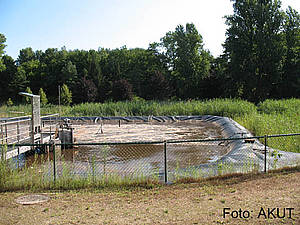Waste water treatment
During the last ten years, the environmental regulations in the field of water quality management have been in complete evolution, particularly at the European level with the new Water Framework Directive (EU WFD) 2000/60/EC, which “aims at enhanced protection and improvement of the aquatic environment, inter alia, through specific measures for the progressive reduction of discharges, emissions and losses of priority substances and the cessation or phasing-out of discharges, emissions and losses of the priority hazardous substances”. This EU Directive also specifies the necessity to “ensure(s) the progressive reduction of pollution of groundwater and prevents its further pollution”.
Article 2 of the present EU Directive indicate in its definitions for pollutants “any substance liable to cause pollution, in particular those listed in Annex VIII”, where it can be found in the indicative list all “substances which contribute to eutrophication (in particular, nitrates and phosphates)”.
However, for several decades there has been a problem of phosphorus removal in wastewater treatment in different countries all over the world. Thus, testing slag’s potential for wastewater treatment has been carried out since the middle of the eighties in Japanese studies (1986), and developed later on in other various countries as Canada, New Zealand, Korea, Czech Republic, France and Germany.

Efficiency of slag used for this purpose has been established and well proven through several scientific studies and a better understanding of crystallographic mechanisms is currently a subject of studies and research. Industrial wastewater treatment plant has already been built in New Zealand, using filtering beds made of slag for phosphorus removal and pilot sites are currently being tested in France and Germany, in the framework of the European research project SLASORB, which aims to develop the application of steel SLAg as a SORBant to extract phosphorus contained in waste water.

1 Research Fund of Coal and Steel (RFCS) of the European Commission
1 For more information, you may consult SLASORB website
www.emn.fr/z-ener/slasorb/index.php?page=home

